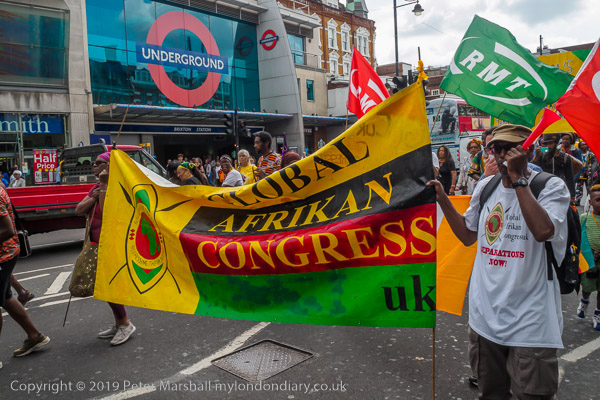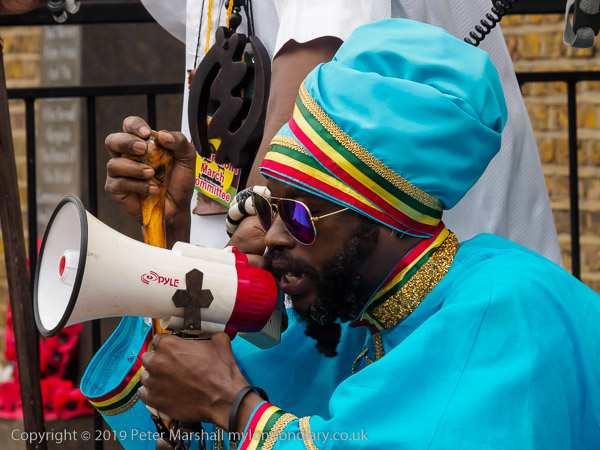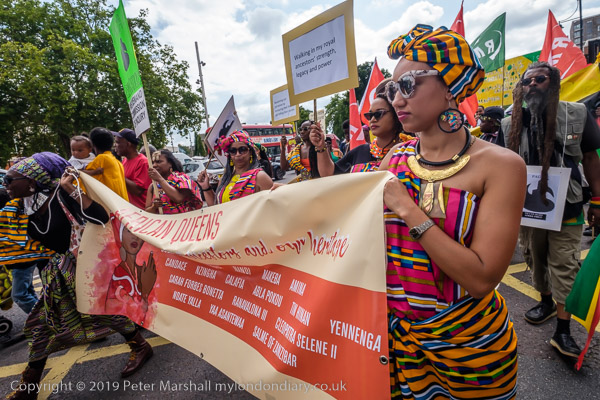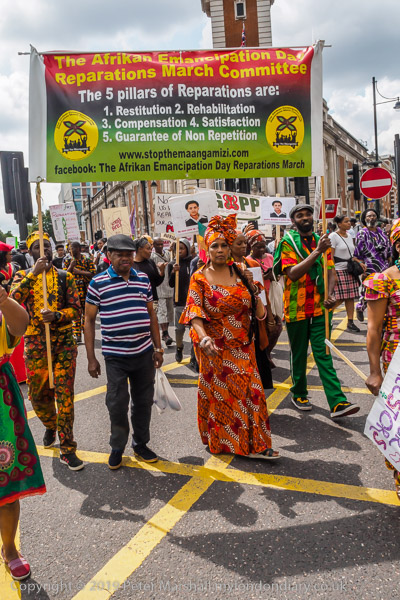Three years ago December 9th was a Saturday and people were out on the streets in at least three protests which I photographed.
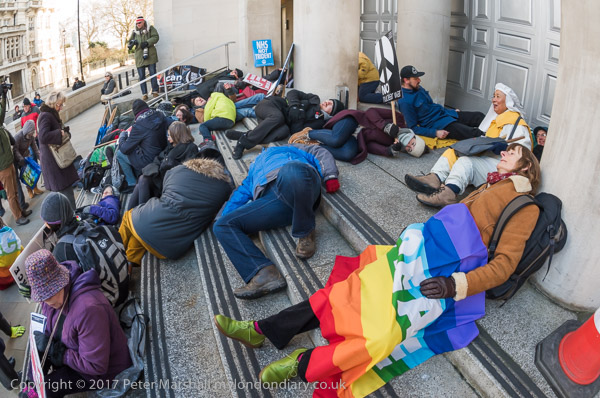
My day’s work began at the Ministry of Defence, where peace campaigners celebrated the award of the 2017 Nobel Peace Prize to ICAN, the International Campaign to Abolish Nuclear Weapons, with a die-in on the steps.
ICAN was awarded the prize for its role in pushing for a United Nations global nuclear ban treaty which was approved by 122 nations at the UN General Assembly in 2017. In October 2020 Honduras became the 50th country to ratify it and will come into force on 22 January 2021. The UK government refused to take and part in the negotiations and has refused to sign the treaty and the award of the Nobel prize hardly got a mention in the UK media.
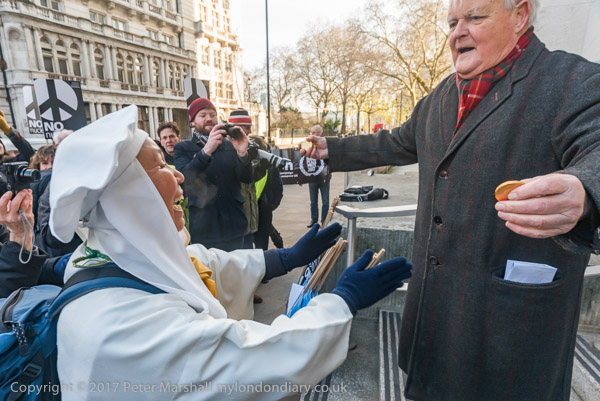
None of the main nuclear powers has signed the accord, and the protesters including members of ICAN UK, CND, Medact and WILPF, the Women’s International League for Peace and Freedom, urged the UK to sign up and scrap Trident replacement. Bruce Kent made a presentation of a large cardboard Nobel Prize to ICAN UK, and handed out small ‘Nobels’ (gold-covered chocolate coins) to all who come up for them. After a few speeches there was then a die-in on the steps of the ministry.
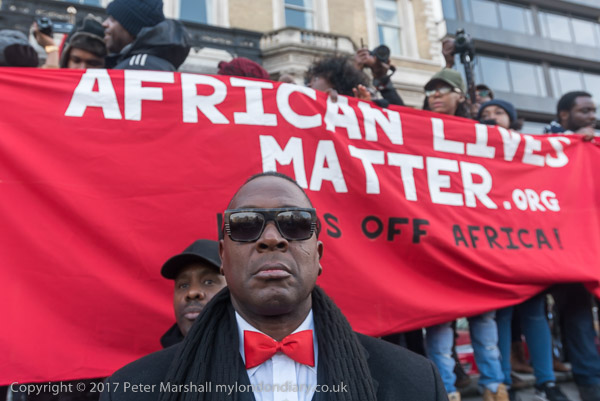
A large crowd had gathered in Belgrave Square for the National Anti-Slavery March, organised by African Lives Matter after the news that African migants detained in Libya were being sold as slaves by Arab slave traders.
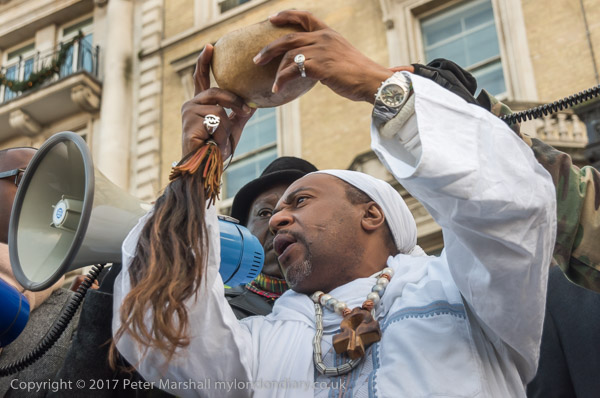
They marched to Knightsbridge and then along to Hyde Park Corner, going around the roundabout and then back along the other carriageway of Knightsbridge to the Libyan Embassy where there was a lengthy rally, including an African priest leading a libation ceremony in memory of the many Africans who have fought for their people against enslavement and colonialism; people in the crowd shouted out names for him to honour with pouring water onto the ground.
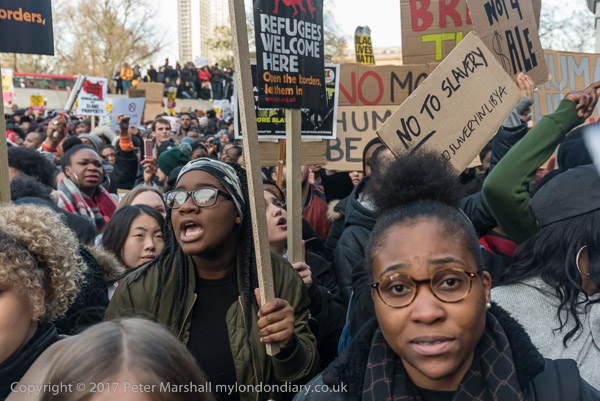
As well as demanding the closure of the Libyan detention centres, action by African governments to rescue people detained in the camps and condemnation of the slave trade and murders of migrants by all African leaders and the UN, calling on Libya to make and enforce laws that prevent these crimes against humanity, many also demanded reparations for the historic slave trade and the continuing despoliation of African resources by imperialist nations including the UK.
I had to leave before the rally ended as I was beginning to shake and feel unwell, weak and dizzy, the signs of an diabetic hypo, and I walked a short distance away to sit down eating one of the snacks I carry to give a rapid boost of my blood sugar. Soon I was feeling well enough to eat my lunch and take the tube to my final event of the day, a vigil outside Lambeth Town Hall in Brixton against the heartless policies of Lambeth Council.
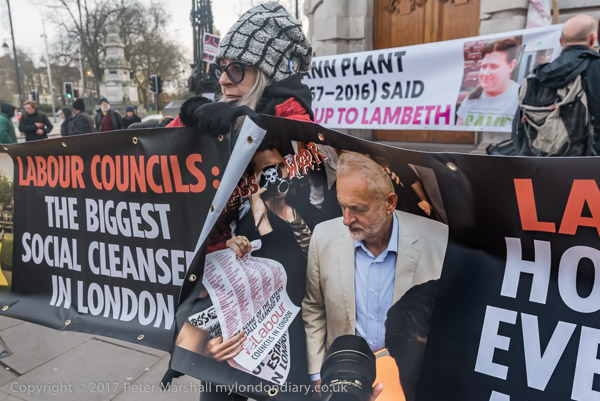
Lambeth are one of the London Labour councils who are pursuing a policy of social cleansing under the guise of regeneration, realising the asset value of council estates by demolition and rebuilding with only small provision of social housing, resulting in many local council tenants and leaseholders being forced to move out of the area.
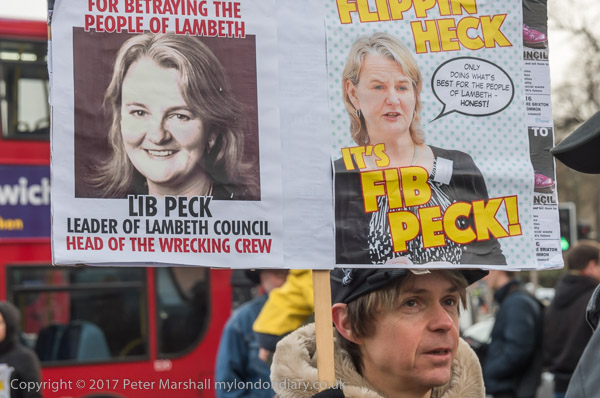
Lambeth have also made drastic cuts, shutting down community centres, cutting services for the disabled, those with mental health problems, young people and social services generally; although the Council claim these actions have been forced on them by Tory government cuts, the protester point out that Councillors’ expenses and allowances keep on growing and they have spent over £150m on a new Town Hall.
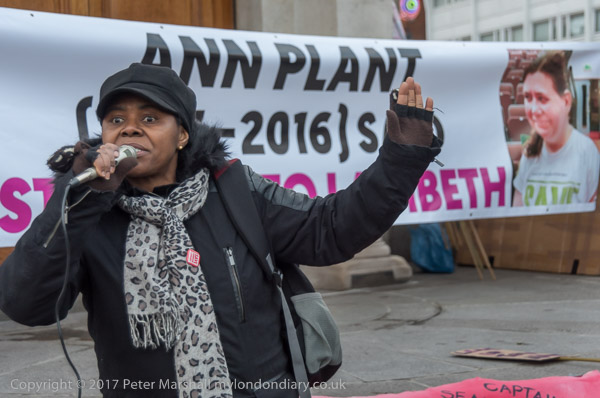
The vigil included a tribute to Cressingham Gardens resident and leading campaigner Ann Plant who died of cancer in December 2016, spending her final months continuing the fight to prevent the demolition of her home and her community by the council.
More from all 3 events on My London Diary:
Stand Up to Lambeth protest and vigil
National Anti-Slavery March
ICAN Nobel Peace Prize Die-In
All photographs on this and my other sites, unless otherwise stated, are taken by and copyright of Peter Marshall, and are available for reproduction or can be bought as prints.
